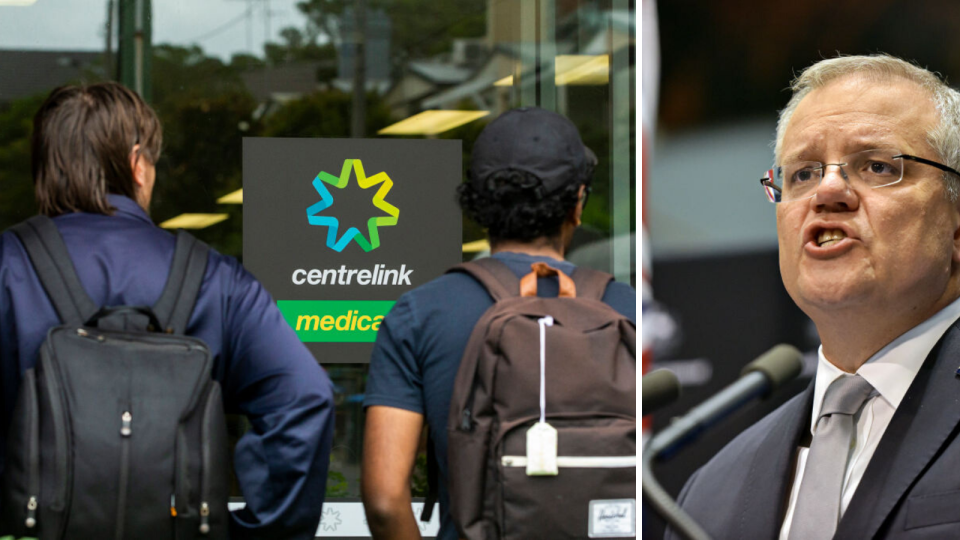Unemployment rates: It's the government's choice

Prime Minister Scott Morrison and Treasurer Josh Frydenberg can choose the trajectory of the post-COVID-19 economic recovery.
They can opt for a series of pro-growth policies that sees the economy embark on several years of rapid job creating expansion, which is a scenario where the unemployment not only falls back to where it was prior to Covid-19, but is even lower.
They can choose policies that see annual wages growth recover to a decent pace around 3.5 to 4 per cent which would dovetail to inflation returning to the Reserve Bank of Australia’s 2 to 3 per cent target range.
More from The Kouk: Living with falling prices and falling wages
More from The Kouk: 'Catastrophic': Why government debt is a ticking time bomb
More from The Kouk: When should the Government ease restrictions?
RBA Governor Lowe would be delighted with that.
Or, alternatively, the government can go back to the pre-COVID-19 strategy of policy adjustments which work to constrain the extent of growth, that stifle business investment and job creation and in the process see the unemployment rate hover at a totally unacceptable level around 6 to 7 per cent. This leaves, as it did before, wages growth floundering at 2 per cent and the inflation rate outside the RBA target band.
The comments within weeks from both Morrison and Frydenberg are not that encouraging about the quest for a pro-growth strategy.
It is increasingly clear that there has been a significant under-spend of the much trumpeted $235 billion of fiscal measures, including on the Jobkeeper and Jobseeker programs.
This is partly because they were too slow to be available and many businesses folded before they could qualify for the payment. This is a design fault that has compounded the extent of the downturn. There was also a tangle of red tape that businesses and the unemployed have had to deal with to qualify for the payments which deterred many from applying.
In other words, the stimulus or rescue measures have not been as effective as they were made out to be or should have been.
Proof is in the data
The evidence for this is overwhelming.
Even with the stimulus measures, Treasury and the RBA are forecasting the labour market to be in a deep depression with the unemployment rate hitting 10 per cent. What these august bodies do not say is that an additional 12 to 14 per cent of the workforce will be underemployed – that is, working fewer hours than is desirable.
Such is the RBA pessimism that it is suggesting the unemployment rate will still be around 7 per cent at the end of 2021, some 2 percentage points (around a quarter of a million people) higher than the level pre-COVID-19.
What to do
The government needs to prove the RBA wrong with this forecast for the unemployment rate.
It can, if it wishes, put in place a range of stimulatory policies that will drive the economy to rapid growth when the bulk of the health crisis concerns pass.
Getting business to invest and consumers to spend will be vitally important.
With lower immigration in place for at least a few years, the urgency for infrastructure spending has been lowered.
This means government driven investment should be focused on renewable energy, water security (desalination plants and dams), social amenity (city and town parks, town centres), education and training, health care, social housing, to name a few.
Injecting great equality in the tax system can be done in a way that does not cost the budget revenue but provides a stimulus with low to middle income earners benefiting from higher take home pay.
Getting Australians skilled so they can find jobs in areas where there is current anxiety about skills shortages not only boosts employment, but is allows many small and medium businesses to flourish.
As former Treasury Secretary Ted Evans once said, “unemployment is a matter of choice” for policy makers.
He was right.
Unemployment can be lowered if the government delivers a policy framework that allows everyone who wants a job, to get a job.
Over to you Mr Morrison and Mr Frydenberg.
Follow Yahoo Finance Australia on Facebook, Twitter, Instagram and LinkedIn.

 Yahoo Finance
Yahoo Finance 
